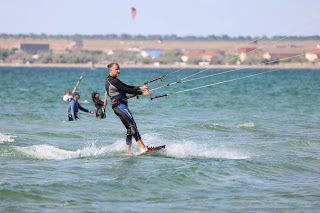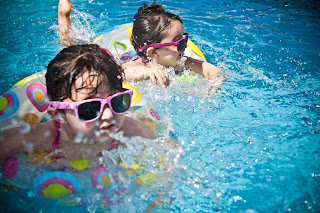Physical Activity for All Ages
Physical activity is only for the young is a misconceptionPhysical Activities Are for All Ages: A Lifelong Commitment to Health
Physical activity is often associated with youth, vitality, and sports, but it is crucial to understand that exercise is not limited to the young. People of all ages can benefit from regular physical activity, regardless of their fitness levels or physical condition. From childhood to older adulthood, staying active plays a pivotal role in maintaining good health, preventing chronic diseases, enhancing mental well-being, and improving quality of life.
Children and Adolescents
Physical activity in childhood is vital for healthy growth and development. It helps in building strong bones and muscles, improving coordination, and maintaining a healthy weight. Additionally, exercise has been linked to better concentration, learning, and emotional regulation in children, boosting cognitive development. Organized sports, outdoor play, and physical education classes help young people develop lifelong habits of fitness.
Adults
For adults, physical activity helps prevent chronic conditions like heart disease, diabetes, obesity, and certain types of cancer. It strengthens muscles and joints, helping to maintain mobility and flexibility. Exercise also significantly reduces stress and anxiety, boosts mood, and enhances sleep quality. Adults who maintain an active lifestyle are more likely to experience a better overall quality of life, with more energy and resilience in their day-to-day activities.
Older Adults
Contrary to popular belief, physical activity is just as important, if not more so, for older adults. Regular exercise helps maintain strength, balance, and flexibility, reducing the risk of falls and injuries. It also preserves muscle mass, which tends to decline with age, and supports joint health, making everyday tasks easier and helping to maintain independence. Physical activity can also slow the progression of chronic diseases such as arthritis and hypertension, while improving cognitive function and mental health. For seniors, activities like walking, swimming, yoga, and strength training are ideal for keeping the body and mind healthy.
Another factor is societal expectations. Youth is often associated with vitality and energy, while aging is seen as a period of slowing down. This cultural mindset can lead to the assumption that younger individuals are naturally more active and older adults should focus on gentler, less strenuous activities.
Different Types of Activities for All Ages
For Children: Fun, engaging activities like running, swimming, biking, and playground games are ideal. Sports like soccer or basketball, or even dance classes, help them stay active in a structured environment.
For Adults: Strength training, aerobics, yoga, jogging, or even brisk walking are great options for maintaining cardiovascular health and muscle tone. Adults can tailor their activities to their interests and schedule to ensure they stay consistent.
For Older Adults: Low-impact activities like walking, tai chi, water aerobics, and gentle yoga are excellent for maintaining mobility without straining joints. Strength training with light weights is also beneficial for preserving muscle mass and bone density.
Contrary to popular belief, physical activity is just as important, if not more so, for older adults. Regular exercise helps maintain strength, balance, and flexibility, reducing the risk of falls and injuries. It also preserves muscle mass, which tends to decline with age, and supports joint health, making everyday tasks easier and helping to maintain independence. Physical activity can also slow the progression of chronic diseases such as arthritis and hypertension, while improving cognitive function and mental health. For seniors, activities like walking, swimming, yoga, and strength training are ideal for keeping the body and mind healthy.
We often assume that physical activity levels depend on age due to the natural changes in the body that occur over time. As people age, they tend to experience a decline in muscle mass, flexibility, bone density, and joint mobility, which makes physical activity more challenging. This decline may lead to the belief that older adults are less capable of maintaining high levels of activity.
Not just this, the energy levels tend to decrease with age, and conditions such as arthritis, osteoporosis, or cardiovascular issues may develop, which further limits the ability to engage in certain exercises.Another factor is societal expectations. Youth is often associated with vitality and energy, while aging is seen as a period of slowing down. This cultural mindset can lead to the assumption that younger individuals are naturally more active and older adults should focus on gentler, less strenuous activities.
However, research shows that physical activity is beneficial at all ages and can actually slow the aging process. Regular exercise improves cardiovascular health, muscle strength, and mental well-being, regardless of age.
You may please check out this myth and do the needful.
Different Types of Activities for All Ages
For Children: Fun, engaging activities like running, swimming, biking, and playground games are ideal. Sports like soccer or basketball, or even dance classes, help them stay active in a structured environment.
For Adults: Strength training, aerobics, yoga, jogging, or even brisk walking are great options for maintaining cardiovascular health and muscle tone. Adults can tailor their activities to their interests and schedule to ensure they stay consistent.
For Older Adults: Low-impact activities like walking, tai chi, water aerobics, and gentle yoga are excellent for maintaining mobility without straining joints. Strength training with light weights is also beneficial for preserving muscle mass and bone density.
Adjusting for Age and Ability
Physical activity doesn't have to be intense to be effective, and it can be adapted to different life stages and physical conditions. For instance: For children, play-based exercises can foster enjoyment, ensuring they associate movement with fun.
For working adults, integrating short walks, stretches, or desk exercises into the workday can provide great benefits.
For seniors, low-impact, joint-friendly exercises such as chair yoga or balance exercises can provide vital health boosts while being gentle on the body.
The notion that physical activity is only for the young is a misconception. Staying active is a lifelong necessity, benefiting people of all ages by improving physical health, supporting mental well-being, and enhancing overall quality of life. The key is to find age-appropriate activities that match one’s ability and interests, making fitness enjoyable and sustainable. Whether you are 9 or 90, there’s a way to stay active and make physical activity an essential part of your life.
Follow this man for inspiration...
A 92-year-old man who enjoys running and weightlifting has been called an “inspiration" to others looking to keep fit. Ken Head, from Spike Island, in Bristol, a former engineer on the Concorde, does between 400 and 600 push-ups most days, followed by a 45-minute workout and a 5km to 10km run. ******************

















Comments
Post a Comment